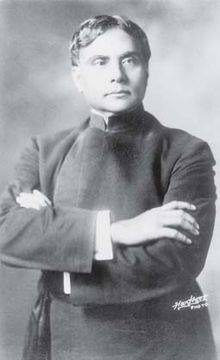Overview of the Tantric Synthesis of Yogic Practice - Sri Aurobindo
31/12/6016.
The integral Yoga is not the first Yoga to attempt a synthesis that integrates the various major methods of Yoga and which accepts the reality, not only of the abstract spiritual truth, but also of the manifestation of the universal creation in the world. While there are significant differences between the integral Yoga and the Tantra, it is useful to review the tantric synthesis briefly.
Sri Aurobindo observes: “Tantric discipline is in its nature a synthesis. It has seized on the large universal truth that there are two poles of being whose essential unity is the secret of existence, Brahman and Shakti, Spirit and Nature, and that Nature is power of the spirit or rather is spirit as power. To raise nature in man into manifest power of spirit is its method and it is the whole nature that it gathers up for the spiritual conversion.”
He goes on to point out that tantric Yoga takes up the processes of Hathayoga, Rajayoga, as well as the powers of knowledge, will and devotion found in the triple path.
“But it does not stop short with an effective assembling of the different powers of these specific Yogas. In two directions it enlarges by its synthetic turn the province of the Yogic method. First, it lays its hand firmly on many of the many springs of human quality, desire, action and it subjects them to an intensive discipline with the soul’s mastery of its motives as a first aim and their elevation to a diviner spiritual level as a final utility. Again, it includes in its objects of Yoga not only liberation (mukti), which is the one all-mastering preoccupation of the specific systems, but a cosmic enjoyment (bhukti) of the power of the Spirit, which the others may take incidentally on the way, in part, casually, but avoid making a motive or object. It is a bolder and larger system.”
The integral Yoga is not the first Yoga to attempt a synthesis that integrates the various major methods of Yoga and which accepts the reality, not only of the abstract spiritual truth, but also of the manifestation of the universal creation in the world. While there are significant differences between the integral Yoga and the Tantra, it is useful to review the tantric synthesis briefly.
Sri Aurobindo observes: “Tantric discipline is in its nature a synthesis. It has seized on the large universal truth that there are two poles of being whose essential unity is the secret of existence, Brahman and Shakti, Spirit and Nature, and that Nature is power of the spirit or rather is spirit as power. To raise nature in man into manifest power of spirit is its method and it is the whole nature that it gathers up for the spiritual conversion.”
He goes on to point out that tantric Yoga takes up the processes of Hathayoga, Rajayoga, as well as the powers of knowledge, will and devotion found in the triple path.
“But it does not stop short with an effective assembling of the different powers of these specific Yogas. In two directions it enlarges by its synthetic turn the province of the Yogic method. First, it lays its hand firmly on many of the many springs of human quality, desire, action and it subjects them to an intensive discipline with the soul’s mastery of its motives as a first aim and their elevation to a diviner spiritual level as a final utility. Again, it includes in its objects of Yoga not only liberation (mukti), which is the one all-mastering preoccupation of the specific systems, but a cosmic enjoyment (bhukti) of the power of the Spirit, which the others may take incidentally on the way, in part, casually, but avoid making a motive or object. It is a bolder and larger system.”





Comments
Post a Comment